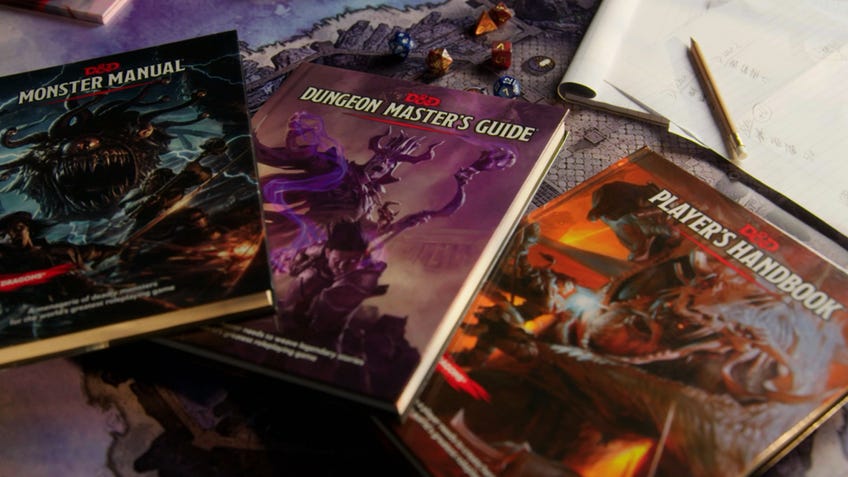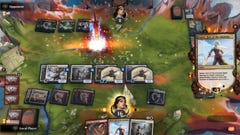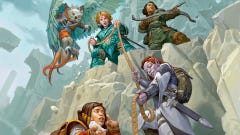One D&D changes vs 5E: What's new in the next Dungeons & Dragons edition?
From creating your character to casting spells, here’s how One D&D is different to 5E.
What are the main One D&D changes compared to 5E? With a new Dungeons & Dragons ruleset coming in 2024, game publisher Wizards of the Coast is figuring out how to revise the beloved fantasy roleplaying game, releasing a fleet of playtest materials with tweaked rules, new mechanics, and overhauled classes in the hopes that ongoing player feedback will help hone the next iteration of D&D.
One D&D changes - September 2023
- Character creation: races, backgrounds and ability scores
- Feats
- Classes: Expert, Mage, Warrior and Priest groups
- Weapons: new abilities for martial classes
- Spells: lists and preparation
- Digital: updates, D&D Beyond and virtual tabletop
- Everything else: hiding, exhaustion, Inspiration and two-weapon fighting
Wizards of the Coast, and its parent company Hasbro, have seen some poor PR in recent months, after proposed changes to the game’s licensing agreements saw a massive outcry from fans and third-party publishers, leading to a swift backtrack (and a flurry of fan interest in alternate game systems). So it’s paramount for the D&D publisher that this new version gets things right, and manages to retain existing fans while setting the stage for a new generation of players.
We’re now in the seventh batch of One D&D playtest materials, and the game’s designers are clearly looking to tighten up some of their more disruptive experiments – reversing a lot of suggested changes (shared spell lists, for one) while holding on to parts that players liked the most.
Backwards compatibility between One D&D and 5E is the aim here, so don’t expect an entirely new game system – though there are still some notable changes, such as the new layer of weapon complexity for martial classes, and a near-total restructuring of the new Dungeon Master’s Guide to make the game more accessible for would-be DMs.
One D&D’s September 2023 playtest revisits five classes from earlier in the playtest – the Barbarian, Fighter, Sorcerer, Warlock and Wizard – incorporating feedback that players gave in the interim. We’ve run through the key One D&D differences below and will keep updating this page with the latest playtest materials, too.
Character creation changes in One D&D: races, backgrounds and ability scores
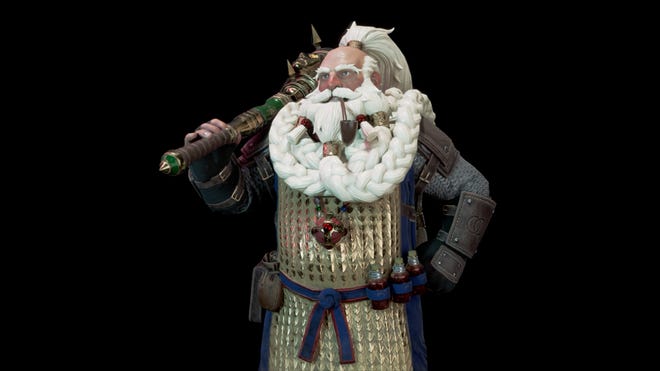
The first One D&D playtest materials were largely to do with character creation – fitting, given that making a D&D character is usually the first thing you do in the game.
Character creation in One D&D largely formalises changes from Tasha’s Cauldron of Everything, the D&D 5E sourcebook that introduced ‘floating’ ability score increases – meaning that an orc, elf or gnome receives bonuses to any ability score instead of being locked into certain choices. This side-steps some of the ickier assumptions around some races – orcs as hefty brutes with high strength, tieflings as devious charlatans oozing charisma – and opens up far more mechanical variety and choice for playable characters. These bonuses are now tied to a character’s background instead, making it more of a cultural consideration.
The playtest also does away with ‘half’ races, like the half-elf or half-orc, focusing on clearer identities for the core handbook. More races now have the option of going either Medium or Small, allowing for more customisation.
The December 2022 playtest changes for One D&D included the giant-descended Goliath. The game's designers have clearly taken inspiration from the Rune Knight subclass in Tasha’s Cauldron of Everything, offering a mix of subraces based on Fire, Hill, Cloud or Storm giants - as well as an ability to temporarily grow your size – which admittedly all feels a bit overkill. Dragonborn are much improved, however, being able to choose a 15ft cone or 30ft line when casting their breath weapon, instead of being locked into one option. They also get a temporary flying ability at level five!
Feat changes in One D&D
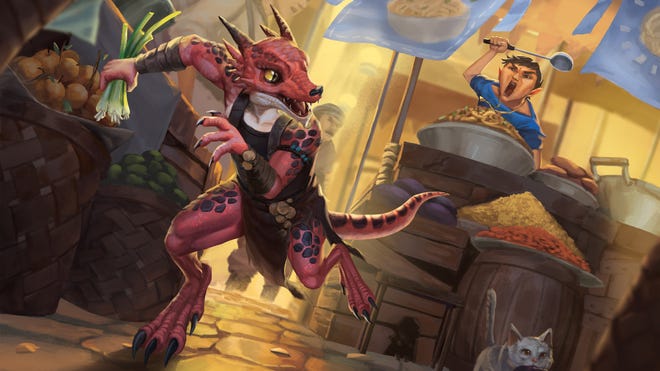
It’s no secret that D&D 5E’s feat system was a bit unbalanced. Some feats offered massive advantages for low-level characters, while others became redundant for high-level ones. The One D&D playtest gives each feat a level requirement, while also tying one first-level feat to every background.
This gives each level one character a fun bonus ability to play with, and ensures more even power bursts at designated feat levels (1, 4, 8, etc). ASIs, or ability score improvements, are now tied to a specific feat, too.
One D&D’s designers toyed with ‘Epic Boon’ feats – essentially, high-power feats that are only available for level 20 characters, replacing usual class capstones – though they seem absent from the latest June 2023 playtest and may not end up in the finished product.
Class changes in One D&D: Expert, Mage, Warrior and Priest groups
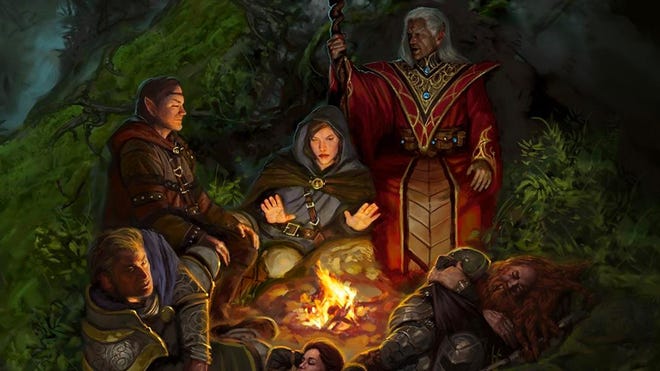
No new classes in One D&D for now, and it looks like an attempted reorganisation of 5E classes within designated groups (Expert, Mage, Warrior, Priest) is being quietly retired, though there are still some major alterations to class and subclass mechanics across the board.
Wizards of the Coast had also toyed with the idea of standardising subclass progression, meaning every class would get subclass features at the same level – it seems to have reneged on this, citing unintended knock-on effects elsewhere, though each subclass will at least start at Level 3 going forward.
Barbarian changes in One D&D
The big, bad Barbarian has had some thoughtful changes in One D&D. Its core Rage ability now has a series of uses out of combat – allowing you to use your heightened physical state to aid certain skill checks (Perception, Acrobatics, Stealth, etc).
Rage can now last for 10 minutes rather than one minute, giving a bit more leeway for exploratory applications, and no longer requires you to hit or be hit to keep your Rage going. You now simply have to reuse a bonus action, make an attack roll, or force a creature to make a saving throw to continue your current Rage – which makes it less masochistic and more versatile for the player. We like!
Barbarians also get Weapon Mastery – the ability to use secondary features of weapons in combat – but to a lesser extent than the Fighter below. Reckless Attack now lasts until the start of your next turn, allowing you to gain advantage on opportunity attacks, and a mobility-enhancing move called Instinctive Pounce has been ported over from Tasha’s Cauldron of Everything too.
The main change in playtest 7 is a new subclass, Path of the World Tree, which taps into planar lore with a multiverse-spanning tree, giving you hit point bonuses when you rage and letting you teleport enemies around the battlefield. You can even gain a Teleport spell-like ability at Level 14, which may be a big boon in parties without a high-level caster.
The popular Totem Warrior subclass is also now renamed as Path of the Wild Heart – like its equivalent in Baldur’s Gate 3 – with some rebalanced abilities and a wider variety of animals to draw on for your powers (Spider, Lion, Elephant, etc).
Bard changes in One D&D
The Bard has seen some big changes in the latest One D&D playtest. Earlier materials saw Bardic Inspiration, a key class feature, turned into a reaction to better ensure its use throughout combat. After player feedback, it’s now once again a bonus action. Bardic Inspiration now lasts for one hour, though, instead of 10 minutes, so there’s less chance of wasting uses.
One D&D is doubling down on the Bard’s identity as a magical magpie, with its Magical Secrets feature now letting you take spells from any spell list from Level 10 upwards. The biggest overhaul is that, when making a Level 1 Bard in the first place, you now choose which spell list you draw from: Arcane, Divine or Primal. It’s an interesting shake-up that will make for a lot of very different Bards – some that feel more like Druids, some like Wizards and others like Clerics – and give lots of room for interesting backstories.
A new College of Dance subclass is a fun twist on the Bard, with boosts to ally movement and initiative rolls, alongside the ability to make Unarmed Strikes when you expend uses of Bardic Inspiration.
Cleric changes in One D&D
The Cleric was the first full caster to show up in the One D&D playtest, though the latest materials show a more refined version of those earlier ideas. At Level 1, players now choose a ‘Holy Order’ – essentially, learned scholar or armoured battle mage – which was a well-received feature in the earlier playtest, alongside a more versatile Channel Divinity option for healing or harming creatures.
However, there’s now been an overhaul to Divine Intervention – a 5E ability that gives you a small chance of rolling for high-powered divine aid. Players appear to have asked for more reliable results, and One D&D designers have responded by allowing Divine Intervention to automatically succeed at casting spells that are 5th Level or below – while a higher-level Greater Divine Intervention functions as a Wish spell, casting any spell of any level. The change makes sense, though it also removes some of the drama of rolling to see if your god will intervene – unsure on this one.
Druid changes in One D&D
The nature-loving, shape-shifting Druid got a big overhaul in its first One D&D playtest appearance, though many of those changes have since been walked back.
Wild Shape (shapeshifting into animals) being tied to set stat blocks for nondescript land, sea and air creatures didn’t go down overly well, it seems, and looks much like its 5E iteration again. However, Wild Shape is now a bonus action for everyone, rather than just those who pick the Moon Druid subclass, and you have a set number of animal forms you can choose (three, to start) with that number increasing as you gain Druid levels. Creatures with swim speeds aren’t locked at later levels anymore, either.
You also keep your normal Druid HP, removing one of the biggest complaints of the 5E Druid – its ability to gain heaps of new hit points every time you use Wild Shape.
The June 2023 playtest introduces a Druid version of the Cleric’s Holy Order, letting you choose between improved armour/weapons and an extra cantrip with a boost to Nature checks – though we hope to see options that feel more Druidic than these Cleric copycats.
Druid subclasses are hugely overhauled, too. The unpopular Land subclass is now focused on four key regions – Arid, Polar, Temperate and Tropical – while a new Circle of the Sea subclass offers some great aquatic benefits (water breathing! swim speed!) and tidal combat abilities. The Moon Druid, traditionally a combat-focused subclass, gives players a temporary HP bonus during Wild Shape, along with access to Abjuration spells and Moonbeam when transformed.
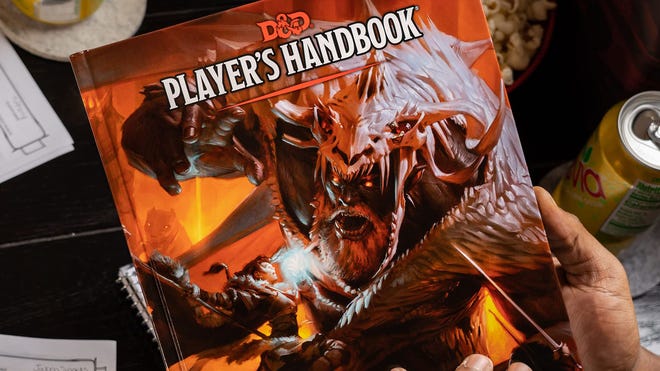
Fighter changes in One D&D
The Fighter has got a lot of love in the One D&D playtest. The main change is a Level 1 feature called Weapon Mastery, which allows Fighters to use secondary abilities for each weapon that not everyone can’t access – like ways to reduce a creature’s movement speed, knock them prone or push them away on a hit, taking the logic of 5E’s Crusher, Piecer and Slasher feats and making them part of the core weapon experience.
There are big boosts to the self-healing ability Second Wind – giving you multiple uses per day, and letting you use it to aid ability checks or move more freely around the battlefield. Level 13 Fighters gain Studied Attacks, which give advantage after a failed attack, as you learn your enemy’s movements – and Fighters can now access the Persuasion skill, opening up some different playstyles compared to the 5E Fighter.
Incredibly, there’s a new Brawler subclass, for those who are happy fighting with their fists or any object in the immediate area – chairs, candelabras, beer glasses. This subclass gains proficiency in improvised weapons, and can throw a punch as powerful as a warhammer. It’s a neat design space to move into, even if it might step on the Monk’s toes a little, and would ideally get some more features earlier on.
What else? The Champion subclass now gets a free use of advantage every turn at level 15, while Battle Masters gain a free use of a Maneuver per turn at the same level. The popular Eldritch Knight subclass, which lets you learn a few Wizard spells along the way, also lets you swap an Extra Attack with a cantrip, mixing and matching swords and spells much like the Bladesinger Wizard. Great changes across the board.
Monk changes in One D&D
The June 2023 playtest finally showed off the One D&D Monk – a class often cited as underdeveloped in 5E.
One D&D Monks now start by doing 1d6 Martial Arts damage at Level 1, making a much-requested change into reality – and it now caps out at 1d12 instead of 1d10, though it’s now limited to Unarmed Strikes instead of weapon attacks. 5E’s Deflect Missiles feature – that let you catch and throw back arrows or projectiles – now covers ranged spell attacks at later levels, too.
Ki Points have been reflavoured as Discipline Points, partially in an attempt to move the class beyond Asian stereotypes. Some low-rated features in 5E – like Tongue of the Sun and Moon, which let you understand all spoken languages – have been cut entirely to make way for more physically-enhanced abilities.
The much-maligned Way of the Four Elements subclass in 5E has got a big overhaul, as Warrior of the Elements – ditching the former’s very limited elemental abilities, which ate in the class’ Ki Point budget, and replacing them with elemental strikes that triple your usual melee range (to 15 feet). It’s a slight mix of Four Elements and 5E’s Way of the Sun Soul subclass, which also let you make ranged energy attacks. This new version is certainly an improvement, if a little nondescript (using fire versus cold damage is largely a matter of flavour, without mechanically distinct results) - though we could see it developed further after player feedback.
Paladin changes in One D&D
The Paladin, already a powerful and beloved class, has some smaller tweaks and changes – including the decision to introduce spellcasting at level 1 (instead of level 2 in 5E). As part of a larger overhaul to 5E’s spell preparation, Paladins can now swap out one prepared spell every Long Rest, rather than shake up their spell lineup entirely every day.
Smites, the damage-boosting spells previously unique to the class, were briefly offered to any class using the Divine spell list, but are now safely back as Paladin exclusives. One D&D’s designers previously considered dropping the 5E concentration requirement for Smites, and allowing for Ranged Weapons, though those features are back in the latest playtest, and Smites are also now limited to one use per turn.
The Find Steed spell is now a full-blown class feature, too, with variable steed abilities defined as Celestial, Fiend or Fey, and feels very flavourful – while the healing touch of Lay on Hands is now a bonus action, rather than an action.
Ranger changes in One D&D
The Ranger already got a big revision in D&D 5E’s supplementary Tasha’s Cauldron of Everything sourcebook, which is mostly just being cemented in the next edition. However, some of 5E’s terrain-oriented features – giving you bonuses when navigating or exploring certain kinds of landscapes, which were culled for Tasha’s revision – are now creeping back into the class for One D&D.
The Ranger has been grouped in with the Rogue and Bard as an ‘Expert’, though is limited to one Expertise (double proficiency) option in the latest playtest, and it also gets access to Weapon Mastery features for more versatile attack options. Like the Paladin, its spell preparation is limited to swapping out one spell per Long Rest, though this is still an improvement on the more static spell choices 5E Rangers had to use.
A brief attempt at giving Rangers cantrips had been walked back too – not fair to give them everything, after all – though the new One D&D Ranger has got some exclusive spells baked in as class features at Level 9 and Level 17 (Conjure Barrage and Conjure Volley, respectively) for some crowd control combat magic. Hunter’s Mark is an exclusive class feature now, too, just like Hex for the Warlock, and comes with free uses per day, though it remains a concentration spell as it was in 5E.
Rogue changes in One D&D
Ah, the Rogue. This trickster has finally got some notable new features in the latest One D&D playtest, with the ability to use Cunning Strikes – sneaky mid-combat effects you can use in place of Sneak Attack damage. That currently includes ways to disarm, poison, trip, blind, daze or fully knock out opponents. It’s a great added layer of trickery for the main class, with added options available in certain subclasses.
One D&D’s designers thankfully gave up trying to nix Sneak Attack for reactions, after we all complained, and have introduced easier methods of using poison as a Rogue – something that often felt very complex or expensive in 5E – alongside access to Weapon Mastery. The Thief subclass has also got explicit ceiling-clambering abilities, and the ability to use Magic Items as a bonus action.
Sorcerer changes in One D&D
The Sorcerer is often seen as the lesser-than Wizard, but its One D&D playtest revision looks to change that. There are two more Metamagic options here than in the 2014 Player’s Handbook, bringing together new additions from 5E sourcebook Tasha’s Cauldron of Everything, and Sorcerers now get access at Level 2 (instead of Level 3). Sorcerers get more spells than ever, too, with a cap of 22 total spells rather than 5E’s measly 15.
A previous playtest toyed with some free Sorcerer-exclusive spells, though this has been swapped out with a Level 1 ‘arcane rage’ (called Innate Sorcery) that boosts your spell attack rolls and spell save DC for one minute. And from Level 7, it’s now possible to apply two Metamagic options to the same spell, while Level 20 Sorcerers can use one Metamagic for free once every turn – helping to ensure you never run out of things to do.
Heightened Spell, which gives an enemy disadvantage on a saving throw, is now easier to afford with your Spell Points. But Twinned Spell, one of the best Metamagic options, was drastically weakened, with the April 2023 playtest document calling it “too powerful” in its 5E form; after feedback to the initial revision, though, you can now ‘twin’ a spell to two creatures as long as the spell can already hit multiple creatures when cast at higher levels.
There’s the expected Wild Magic subclass, with some tighter constraints on using the chaotic Wild Magic table, to ensure things don’t get derailed every time a spell is cast – and the Draconic Bloodline subclass, with some concentration requirements and sorcery point costs removed to get more use out of its features.
The other subclass choices are a little surprising. One D&D ports over the Aberrant Mind and Clockwork Soul subclasses from Tasha’s Cauldron of Everything – sidestepping the flavorful Shadow Magic, Divine Magic and Storm Sorcerer subclasses from the Xanathar’s Guide to Everything sourcebook – which is a little surprising, though the overlooked options should still be compatible with the base One D&D Sorcerer class. (Aberrant Mind and Clockwork Soul aren’t detailed in the latest playtest, but we expect they match Tasha's version closely enough.)
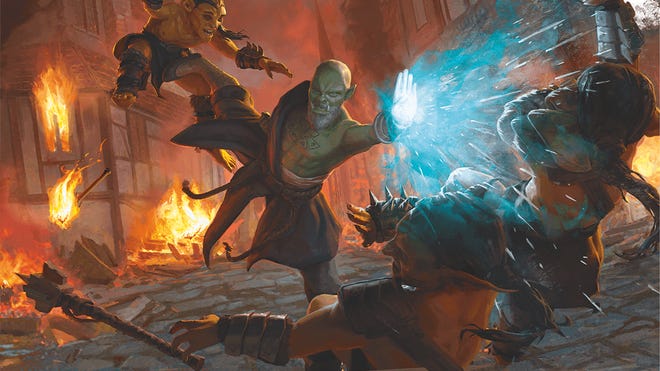
Warlock changes in One D&D
The Warlock has been one of the most iterated classes in these playtests. First, One D&D's designers attempted to replace the class’ unique Pact Magic feature with a more standard half-caster template, and an increased number of spell slots – though they quickly reversed this to something closer to the 5E class after a divisive fan response.
In playtest 7, the Warlock still has Pact Magic, a tight number of increasingly-powerful spell slots, and a Mystic Arcanum feature that lets you choose one specific spell per level for 6th Level spells and above. So far, so 5E. But the aim is still to let Warlocks cast more often, and there’s now a Magical Cunning feature at Level 2, which lets you regain half your spell slots in a pinch with a one-minute ritual.
The big change is that the three core ‘Pacts’ from 5E – Pact of the Chain (pet owner), Pact of the Blade (swordsman), Pact of the Tome (bookworm) – are now rebalanced as regular invocations, and you can have more invocations overall, allowing for far more customisation around your playstyle. If you liked, you could even access all three of the above pacts at the same time!
The subclasses have seen some amazing changes, too. Choosing the cosmic horror Great Old One lets you change any Warlock spell damage into Psychic damage, and even cast Illusion/Enchantment spells telepathically (i.e. without speaking or moving your hands). The Archfey is now a dedicated Misty Step subclass, giving you multiple free uses per day of the short-range teleport spells with a host of add-on effects, while the Celestial patron (originally from the Xanathar’s Guide To Everything sourcebook) is now a base subclass in the 2024 edition.
For anyone used to playing a 5E Warlock, it feels a little strange to not formally pick a patron until Level 3, though these latest changes should make up for it a little.
Wizard changes in One D&D
Ah, the Wizard. The hugely powerful spellcaster has been lightly reorganised and rebranded – with the playtest rules largely focusing on communicating abilities better and making them sound cooler. (School of Evocation Wizard is dead, long live the Evoker Wizard.)
5E’s six subclasses have been trimmed down to just four, too – Evoker, Abjurer, Diviner, and Illusionist – leaving Necromancy and Transmutation out in the cold for now.
These subclasses are a lot more dynamic in One D&D – nixing the school-specific cost discount for copying spells in 5E, and replacing it with more free spells overall from your chosen school (two more when you choose the subclass, and one whenever you gain access to a new spell level). The Abjurer can now use spell slots to strengthen its Arcane Ward ability, too, and even casts Dispel Magic as a bonus action at higher levels, making a defensive caster feel much more active.
One D&D's designers trialled some complex, multi-step abilities around customising your own spells, though these have been thankfully cut in the latest playtest – other than a Memorize Spell feature that lets you prepare an unprepared spell at short notice (perfect for a tactical revision part-way through the adventuring day).
The One D&D Wizard also gives you Expertise (double proficiency) in a chosen Intelligence-based skill, ensuring that a Rogue isn’t accidentally better at studying than you.
Weapon changes in One D&D: new abilities for martial classes
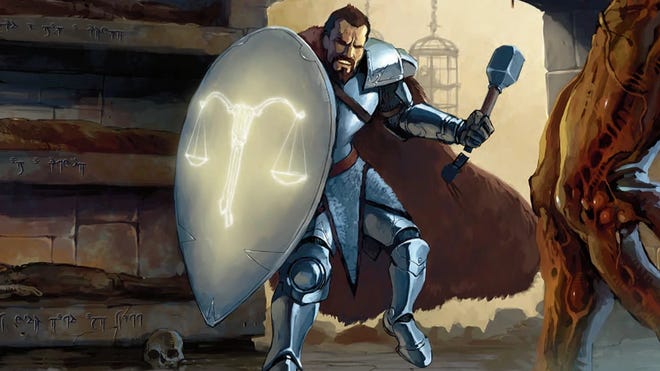
5E players have long complained about the limited abilities of martial classes – and One D&D’s designers have listened. The playtest has introduced a new layer of weapon complexity, called Weapon Mastery, which gives every weapon in the Player’s Handbook a secondary property that only certain classes can access.
That means a Fighter or Barbarian can use a greatclub to Push a goblin 10ft back with a hit, whereas a humble Bard would be stuck just doing the basic damage. Other abilities include Topple, which lets you knock creatures prone; Slow, which reduces a creature’s speed; and Sap, which confers disadvantage on the creature’s next attack roll. It’s a varied system that should help weapon-oriented classes feel a little more impactful and dynamic alongside their reality-bending spellcaster friends. (A ‘Flex’ option, which granted two-handed damage when holding a Versatile weapon in one hand, was nixed after proving the only unpopular option in player feedback.)
So far, we’ve seen Fighters, Paladins, Rogues, Rangers, Barbarians and Monks get access to Weapon Mastery, as well as the Cleric’s War Domain subclass.
Spell changes in One D&D: lists and preparation
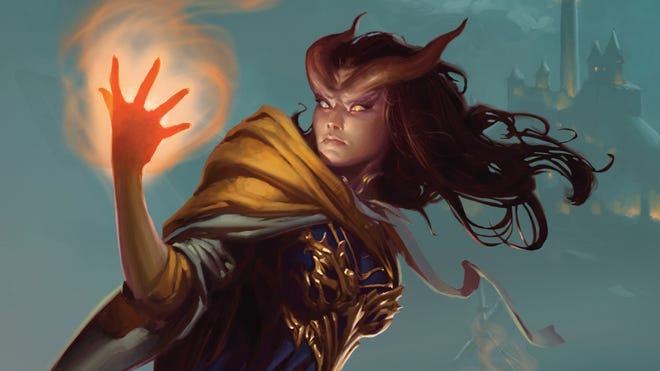
What a rollercoaster spell lists have been. The first few One D&D playtests saw a shared spell list system, ditching 5E’s class-specific spells for Primal, Divine and Arcane lists – with each class having access to a different list depending on the source of their magic, and the musical caster Bard getting to choose their own.
However, after a lot of player feedback, this has been nixed in favour of class lists again, partially due to complaints over class identity being eroded – and the difficulty of balancing certain classes who shared the same spell loadout.
An attempt at simplifying 5E’s spell preparation (by limited spell choices for the slots you have for each level) also seems to have vanished in the latest playtests, presumably due to negative player feedback – though it’s certainly an area One D&D could improve on.
Spell preparation also means different things for different classes in One D&D. Whereas 5E classes were split between ‘prepared’ (you pick new spells each day) and ‘known’ (you know a set amount of spells that don’t often change), designers are attempting to reorganise this to allow for more variety and experimentation, rather than locking certain classes into spell choices they get bored of. Some, like the Ranger or Paladin, are now able to swap out a single prepared spell per day; others, like the Bard, can only do so per level.
Playtests have seen some major changes to individual spells, too. Counterspell, long seen as too powerful for its own good, now requires a saving throw from the targeted creature in every instance, rather than an automatic success for a low-level spell and a player ability check for more powerful spells. It’s a big power reduction, but probably necessary in some form.
The never-once-used-by-anyone Jump spell has also been rewritten to allow for 30-foot leaps around the battlefield every turn – while Spiritual Weapon, already a decent Cleric spell, now gets a damage boost for every level you cast it at above second level.
One D&D goes digital: updates, D&D Beyond and a virtual tabletop
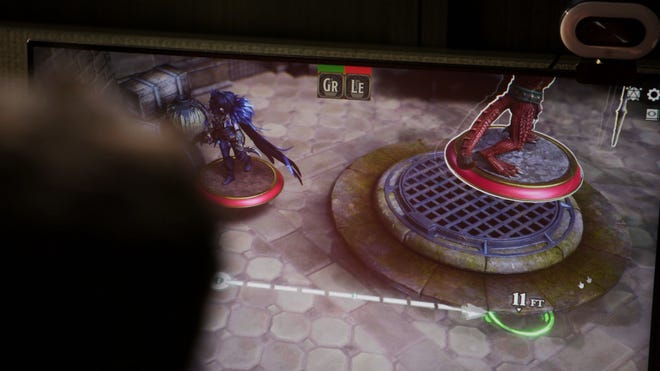
While the RPG’s physical sourcebooks aren’t going anywhere with One D&D, it’s clear that Wizards of the Coast is looking to focus more on the digital experience of playing Dungeons & Dragons.
One D&D is set to be the ‘forever’ edition of Dungeons & Dragons, one that’s fully integrated into the D&D Beyond platform (fully absorbed into Wizards as of 2022) and does away with the need for a sixth or seventh edition.
Time will tell how long this lasts, but it sounds like the aim is to offer incremental tweaks and changes as more of a live service game, instead of the firm distinctions between earlier and later editions. Given the immense popularity of 5E, it makes sense that Wizards of the Coast thinks it has the formula pretty much pinned down, with its One D&D FAQ saying: “The evolution of Fifth Edition has shown us it’s less important to create new editions of the game and more important to grow and expand the game you love with each new product.”
You’ll also be able to buy physical/digital bundles of sourcebooks through D&D Beyond, meaning you’ll get a digital copy through the platform when ordering a physical sourcebook – though the offer is exclusive to D&D Beyond purchases for the moment.
Embracing the D&D Beyond toolset goes even further than this; we know the company is working on a “Digital D&D Play Experience”, described as an immersive tabletop space that is currently in “early development”. We’ve only seen a short amount of alpha footage so far, but it looks like Wizards wants to cater to online gamers and streamers by offering virtual maps and gameplay beyond what competing virtual tabletop tools like Roll20 can offer.
Everything else in One D&D: hiding, exhaustion, Inspiration and two-weapon fighting
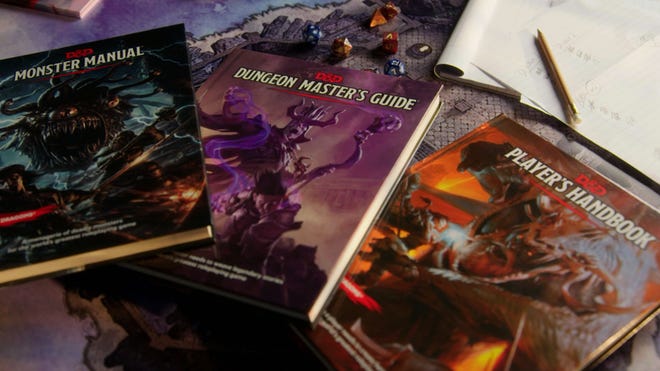
Alongside larger race and class changes, there’s also a host of smaller tweaks and edits coming in One D&D that will have a big impact on how the game is played day to day.
Dragonborn now automatically benefit from darkvision (a change lifted from 5E book Fizban's Treasury of Dragons), while Dwarves can listen out for creatures via vibrations in the ground (Tremorsense – a much more useful ability than 5E’s enhanced architecture checks). Tieflings, too, now have one of three lineages with slightly different spells and damage resistances, depending on your preference.
Ritual casting now applies to all casters, instead of being an exclusive feature for certain classes – we imagine many tables were running rituals like this anyway.
Hiding is a simpler affair: instead of rolling against an enemy’s passive perception, players simply have to beat a DC 15 Stealth check, which slightly simplifies things and lets players know immediately how they’ve fared. When Hidden or Invisible, you also get advantage on attack rolls and initiative rolls.
As for rests, Wizards of the Coast has made the wise decision not to punish players for a middle-of-the-night ambush. Interrupted sleep will no longer ruin the effects of a Long Rest, while all HP/hit die are automatically restored by the morning, instead of having to calculate a percentage. For impatient players, the ritual spell Prayer of Healing now confers the benefits of a short rest in only 10 minutes, which feels like a brilliant boost to the spell.
Exhaustion has also had an overhaul. 5E’s rules for this were quite punishing, as even low levels of exhaustion gave disadvantage on ability checks and halved movement speed – neither are minor afflictions. In the One D&D playtest, each level of exhaustion simply subtracts -1 from all d20 rolls, which is far easier to track than its 5E counterpart.
Two-weapon fighting is finally a viable playstyle, too. If you hold a light weapon in each hand, you can now attack with both weapons as part of the same action – albeit without the damage modifier on the second roll. In 5E, a second attack used up a bonus action, which meant it was rarely worth doing and ate up a lot of your action economy.
A new Dazed condition limits affected creatures’ abilities to move and take actions on the same turn - and is already popping up in a few spell and feature descriptions (as in the Paladin’s level 9 feature Abjure Foes).
Animal Handling checks can now explicitly affect monstrosities as well as beasts – meaning there’s a chance of coaxing a Gelatinous Cube into letting go of your allies.
We know that One D&D’s new Dungeon Master’s Guide will be restructured to improve accessibility of the game’s complex rules - starting with the basics of D&D rather than throwing you in the deep end of campaign building or designing governments and gods, though we’re yet to see a formal playtest for these materials.
Just remember that you can head to D&D Beyond yourself to view materials throughout the playtest, and give feedback a few weeks after each part of the playtest is available for download.

